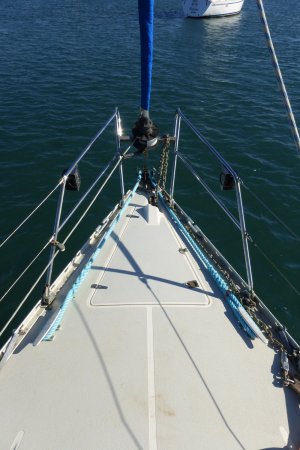ylop
Well-known member
It is interesting that mooring design - both in terms of below the waterline and the fastening to the vessel is so different worldwide. Perhaps its the density of boats we try and pack in an area or the ability of helmsmen to chew up a mooring with their prop (or damage it and not say) that affects the decision. It does make googling for solutions tricky though - as loads of the information is irrelevant.I find it odd that UK moorings are as you describe, chain attached to the seabed (big concrete block or...) and chain rising to floating buoy. Pennant attached to buoy - often also connected to chain.

